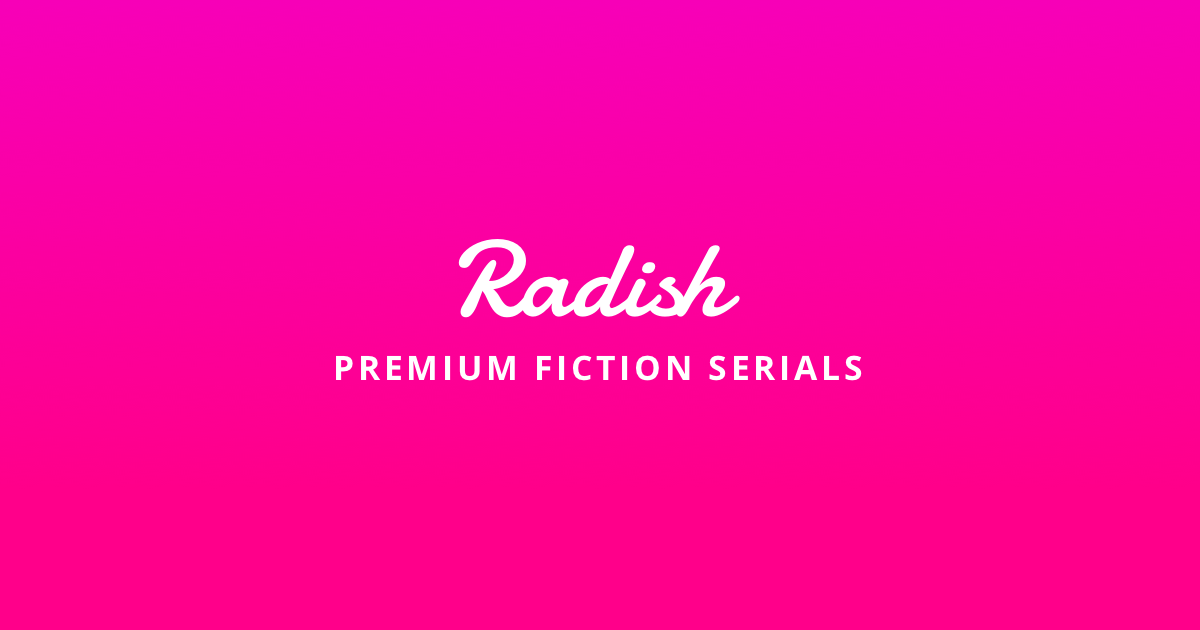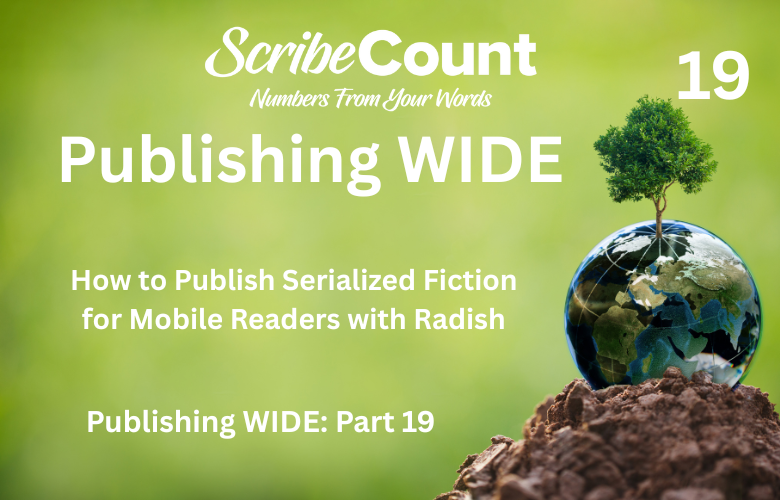Radish announced July 3rd, 2025, that they are shutting down the app December 31st, 2025.
Radish Fiction has rapidly become a standout platform in the serialized fiction landscape, offering a dynamic way for indie authors to connect with hungry readers who consume stories one bite at a time. While platforms like Kindle Vella and Wattpad also serve episodic fiction, Radish distinguishes itself with its mobile-first interface, monetization structure, and built-in fanbase eager to binge romantic dramas, fantasy adventures, and contemporary sagas.
With millions of downloads across iOS and Android, and a largely young, mobile readership, Radish is an ideal home for authors writing in popular, addictive genres. While Radish does not publish exact author figures, it supports thousands of active serial writers, many of whom earn real income by releasing stories chapter-by-chapter. The platform’s audience is particularly robust in the romance, young adult, and fantasy categories, with reader engagement often outpacing traditional ebook storefronts in those niches.

Platform History
Radish was founded in 2015 by Seung Yoon Lee, inspired by South Korea’s digital storytelling culture. Designed to emulate the serialized, micropayment-based storytelling model already thriving in Asia, Radish launched in the U.S. with a mobile-first interface and a romance-heavy catalog. Its initial mission was simple: to make fiction as addictive and accessible as the next Netflix series.
The app quickly grew a loyal following by curating content that catered to binge readers. It targeted the kind of storytelling that didn’t just entertain but compelled readers to pay for the next chapter—something that became the core of its monetization strategy. In 2021, Radish was acquired by Kakao Entertainment, further expanding its reach and solidifying its place as a major player in serialized mobile fiction.
Today, Radish focuses on premium serialized stories, offering both original content from in-house teams and open submissions from independent writers. Its system rewards consistent publishing, fan engagement, and genre alignment with what's trending in mobile storytelling.
How Radish Fits in a Wide Strategy
For authors going wide—publishing across many platforms to diversify income—Radish offers an alternative revenue stream beyond standard ebooks and audiobooks. While it doesn't distribute to traditional retail outlets, it taps into a mobile-first, app-based economy that many authors overlook. Integrating Radish into a wide strategy is smart for authors who:
-
Write in high-engagement genres like romance, paranormal, fantasy, or drama
-
Want to diversify income through episodic releases
-
Are comfortable reformatting content or writing with serialization in mind
-
Wish to cultivate a direct fanbase on a non-retail app
Adding Radish to your publishing strategy won’t cannibalize your other sales. Instead, it offers a new monetization path that’s native to mobile, incremental, and designed for binge consumption.
What Radish Offers Indie Authors
Radish enables authors to serialize fiction into bite-sized episodes, with monetization kicking in through microtransactions. Each new chapter can be locked behind Radish’s coin system, where readers pay to unlock the next part of the story or wait for it to become free via the platform’s freemium model.
Indie authors can either submit to Radish’s open creator program or pitch full stories for inclusion in premium editorial programs. Those accepted into curated programs often receive marketing support and visibility boosts. Meanwhile, open program authors can upload stories, schedule releases, and monetize episodes through the platform’s dashboard.
Radish also encourages binge culture by rewarding authors who publish consistently and keep readers engaged. With features like fast pass unlocks, bonus episodes, and event-based promotions, Radish builds an environment where reader anticipation drives sales and loyalty.
Terms and Conditions, Royalty Structure, and Payment
Radish offers a contract-based relationship for its premium content creators, while its open platform uses a standard revenue share model. Payment terms vary depending on your tier, but most indie authors fall under these conditions:
-
Revenue Share: Authors typically receive 50% of net revenue from coins spent on their episodes.
-
Payout Threshold: Payments are processed monthly once the author exceeds a minimum threshold, often around $50–$100.
-
Exclusive & Non-Exclusive Options: Radish often requires exclusivity for premium content, though self-uploaded works can be non-exclusive.
-
Content Control: Authors maintain IP rights but must comply with Radish's content and community guidelines.
Payouts are delivered via direct deposit or PayPal depending on your location. Authors should be aware that Radish uses a tiered system, and support and promotion levels increase as your content proves popular.
Comparison Chart
| Platform | Distribution Style | Royalty Rate | Best Genres | Unique Feature |
|---|---|---|---|---|
| Radish | App-based serials | 50% of net revenue | Romance, Drama, Fantasy | Mobile-first micro-payments |
| Kindle Vella | Episodic | ~50% of reader tokens | Romance, Suspense, LitRPG | Kindle ecosystem integration |
| Wattpad | Freemium + Paid | Varies (Ad + Paid) | YA, Romance, Fanfic | Huge global reader base |
| Ream Stories | Subscription | 90% of subscriber pay | All genres | Creator-owned subscription |
| Royal Road | Free + Patreon | Author-dependent | Fantasy, Sci-Fi, LitRPG | Active reader forums |
Marketing Offered Through Radish
While Radish doesn’t offer the extensive marketing dashboards of major ebook retailers, it supports its authors through in-app promotions, featured placement, and data-driven recommendations. Much of the promotion is curated, so the better your content aligns with reader demand, the higher your chances of being noticed.
Here are the key marketing elements authors can leverage:
-
Featured Story Placement: High-performing or staff-curated stories get prominent exposure on the home screen.
-
Genre Spotlights: Radish rotates collections based on trending genres like Paranormal Romance, Alpha Male Drama, or Urban Fantasy.
-
Event Promotions: Themed months (e.g., Valentine’s Day specials) allow authors to enter contests or events that get visibility.
-
Reader Comments & Interaction: Episodes support comment sections, allowing you to build direct rapport with fans.
-
Exclusive Contracts: Stories chosen for premium publishing sometimes receive Radish-funded advertising, including social media campaigns.
To maximize your promotional potential on Radish, stay consistent with uploads, hit cliffhangers, and actively engage with comments.
Pros and Cons of Using Radish
Pros:
-
Ideal for mobile-first readers in high-demand genres
-
Monetization through microtransactions adds steady income
-
Built-in reader base seeking binge-worthy content
-
Encourages serialized storytelling without full-length book pressure
Cons:
-
Limited genre flexibility—non-fiction and niche genres struggle
-
Requires a unique formatting and release mindset
-
Some features only available to exclusive/premium authors
-
Not integrated with mainstream book retailers (no distribution to Amazon, Kobo, etc.)
ScribeCount Integration with Radish
As of now, ScribeCount does not support Radish in its primary dashboard, since Radish operates independently from traditional ebook storefronts. However, authors using Radish can still manually track income and performance metrics and use ScribeCount’s robust multi-platform features to contrast Radish earnings with their wide distribution revenue across Amazon, Apple Books, Kobo, and others.
ScribeCount’s customizable dashboards can include Radish income via manual inputs, enabling you to keep all your publishing income in one visual space—even from platforms not yet integrated.
For more, visit: ScribeCount.com
Conclusion
Radish offers indie authors a compelling platform to reach mobile-first, fiction-hungry audiences through serial storytelling. Its episodic model rewards consistency, cliffhangers, and genre savvy, while its monetization system provides real financial opportunity in romance, fantasy, and drama.
Though Radish may not be for every author—especially those writing non-fiction or literary fiction—it’s a dynamic tool in a wide author’s toolkit, especially for those who enjoy crafting stories in serialized form. For authors willing to adapt their work to Radish’s mobile-first world, the potential for income and reader engagement is real, scalable, and well worth exploring.
